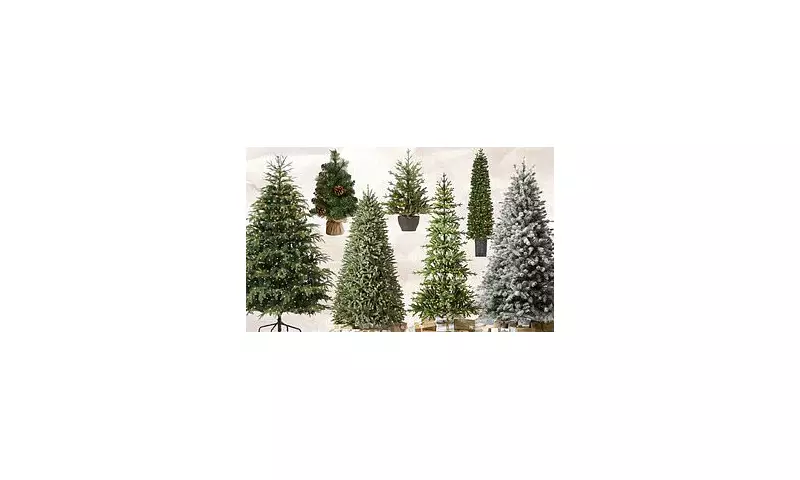
If you're looking to add some royal sparkle to your Christmas celebrations this year, you might be fascinated to learn that the beloved Christmas tree tradition has regal origins dating back over two centuries.
The Royal Introduction of Christmas Trees
Queen Charlotte, the German wife of King George III, first brought the Christmas tree custom to Britain in 1800. She arranged a festive yew tree display at Queen's Lodge in Windsor for a Christmas Day party she hosted for children from the local area. The tradition quickly gained popularity, and the Queen continued to feature Christmas trees in various royal residences throughout her life.
This festive practice made a significant impression on Charlotte's granddaughter, the young Princess Victoria, who wrote enthusiastically in her teenage diaries about the Christmas trees she admired at Kensington Palace. When Victoria became Queen, she and her husband Prince Albert firmly established the Christmas tree as the central feature of British Christmas celebrations.
The tradition reached households across the nation after The Illustrated London News published a famous illustration in 1848 showing the Royal Family gathered around their exquisitely decorated fir tree. This image captured the public imagination and set the standard for Christmas celebrations throughout the country.
Choosing Your Perfect Artificial Christmas Tree
Today, the Christmas tree remains the centrepiece of most British homes during the festive period, making it essential to select the right one for your space. We consulted two leading experts: Mac Harman, CEO of Balsam Hill, and David Sumner, Sales Manager at Christmas Tree World, for their professional advice on finding the ideal artificial tree.
Consider Your Space and Size Requirements
The most crucial factor when choosing your Christmas tree is determining where it will be positioned in your home, as this decision significantly influences which style will work best.
Once you've selected the perfect spot, take precise measurements. Mac Harman recommends choosing a tree approximately six inches (15cm) shorter than your ceiling height. For instance, a 7.5-foot tree suits an 8-foot ceiling perfectly, allowing sufficient space for your chosen tree topper.
Harman also points out that real trees typically measure about six inches narrower than their stated diameter. If you're working with limited space, slimline designs like Balsam Hill's Alpine tree provide abundant greenery within a more compact shape.
For those seeking smaller options, tabletop trees represent an excellent choice, particularly for children who might appreciate having their own tree to decorate. Notable examples include John Lewis' 3ft Cotswold Potted Pre-lit Tree and M&S' 1.5ft Pre-Lit Pine and Berries Tree.
Achieving Realistic Appearance
David Sumner explains that artificial Christmas trees offer a cost-effective alternative to real trees and, when selected carefully, can create equally magical results.
He emphasises that realism primarily depends on materials. The branch material proves crucial for achieving an authentic look. Polyethylene branches deliver exceptional three-dimensional realism since they're moulded from actual tree branches.
PVC branches can also appear highly realistic - just ensure you check their length, width, and material quality to guarantee you're obtaining good value. Our top recommendations for realistic trees include Christmas Tree World's Devonshire style, Balsam Hill's Pre-lit European Fir, and John Lewis' St. Petersburg Pre-lit Christmas Tree.
Selecting the Right Colour
The colour of your tree's branches represents another important consideration when aiming for a natural appearance. Artificial trees featuring subtle variations in green tones effectively mimic the depth and dimension of real fir trees.
Sumner advises avoiding excessively bright greens and instead choosing dark, waxy tones or soft peashoot shades, similar to those found in Christmas Tree World's Matterhorn Pine.
For alternative colour options, Balsam Hill's Royal Blue Spruce showcases blue-green needles, while Habitat's Upswept Tree offers realistic pine-needle branches.
For traditional styling, M&S' deep green tree comes pre-decorated with red berries and pine cones, complete with 200 mains-powered LED lights that emit a warm white glow.
Mac Harman notes that natural evergreen hues generally suit any space, but if you prefer something different, frosted trees work wonderfully for making your decorations stand out. He suggests combining them with warm lighting to prevent the tree from appearing too cold.
The Enduring Legacy of Royal Christmas Traditions
From its royal introduction in 1800 to its current status as Britain's favourite festive centrepiece, the Christmas tree continues to bring joy to households across the nation. Whether you opt for a traditional green fir or a modern frosted alternative, selecting the right tree ensures your Christmas celebrations maintain that magical royal touch first introduced by Queen Charlotte more than 220 years ago.





